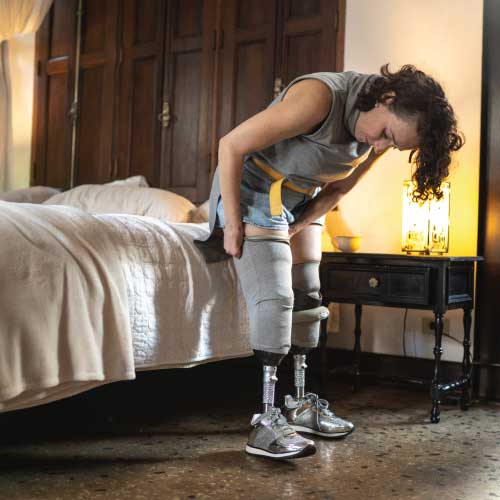Are 3D Printed Below-Knee Prosthetic Sockets A Viable Option?
Prosthetic sockets are a vital part of lower limb prostheses. It is subjected to repetitive loading, enduring up to 110-120% of body weight plus more when doing activities like running. So, creating high-quality prosthetic sockets and avoiding mechanical failure is crucial.

Traditional prosthetic sockets are typically manufactured with laminated and thermoplastic composites, both of which provide superior strength-to-weight characteristics. However, manufacturing these prosthetic sockets can get costly. Add to that the long production times that don't respond to the rapid implementation of modifications.
3D printing can provide an alternative to the traditional manufacturing process. The process takes less time than conventional methods, allowing less time between amputation and acquiring the first prosthetic limb. This could lead to better outcomes as it could limit the adverse effects of prosthetic socket disuse. Most importantly, rapid production may be better for patients with unstable residual limb volume, thus requiring various socket modifications.
However, prosthetists are still not confident to recommend 3D printed sockets; there's not enough evidence that shows 3D printed prosthetic sockets are safe for long-term use.
So, a group of researchers systematically reviewed existing literature about mechanical testing of 3D-printed prosthetic sockets. They sought to analyze factors that can influence the strength of 3D-printed prosthetic sockets, as well as better understand the structural integrity of 3D-printed sockets compared to laminated composite sockets. The findings of this study were published in PLOS ONE on October 2022.
The study
The group searched for relevant studies from various databases, including CINAHL, Medline (Pubmed), Scopus, and Web of Science. The initial search produced a total of 1,505 hits.
They narrowed the selection by considering the following factors: the studies must mechanically test for structural integrity performed according to ISO 10328 standards and look into lower-limb prosthetic sockets. As a result, only 12 studies were included for assessment.
Five studies used only 3D printing techniques for socket fabrication, while another five used only traditional manufacturing techniques. Two studies used additives and conventional manufacturing techniques.
Findings
The researchers found that the strength of the 3D-printed prosthetic socket seemed to improve when composite materials, like carbon fiber particles and distal reinforcement, were added.
They also found significant diversity between the studies regarding materials and alignment used. Because of this, the researchers couldn't establish the absolute values for failure for 3D-printed prosthetic sockets. They also couldn't directly compare 3D-printed prosthetic sockets and laminated composite sockets.
However, the researchers found some evidence that the likelihood of a failure at a given load may be comparable between 3D-printed prosthetic sockets and laminated composite sockets up to the P8 level. Furthermore, failure mainly occurred at the distal end of the prosthetic socket or the pyramid attachment for both 3D-printed and laminated composite prosthetic sockets.
Because the failure location was the same for both laminated composite sockets and 3D-printed prosthetic sockets, the researchers noted that the strength of 3D-printed sockets could be improved by reinforcing the distal end using compositing infill techniques. New advances in printing technologies, like alternating the direction of the fibers, may also enhance strength.
When these modifications on the distal end and printing technologies can be implemented, the researchers believe that 3D-printed prosthetic sockets could finally be a viable option for patients with a limited budget or access to care.











































































